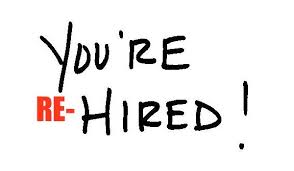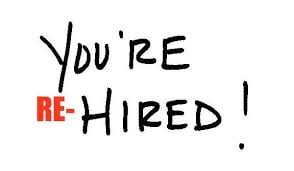You have several options for rolling over your employer-sponsored 401(k) retirement plan if you have quit working for Caterpillar. Choosing where to roll over your account can potentially save you tens of thousands of dollars â or cost you the same amount if you choose incorrectly.
Rolling over a 401(k) with high-fee investments into an individual retirement account (IRA) with lower-cost investment options or into your current employer's 401(k) plan could save you a significant amount of money. According to the U.S. Department of Labor, a 1 percent increase in fees could result in a 28 percent decrease in your retirement account balance.
If you work for Caterpillar and a rollover makes sense for you, here's how to transfer your old 401(k) funds to a new one.
Â
How to transfer your 401(k)
- Follow these five steps to get your 401(k) rollover underway:
- Determine the type of account you desire.
- Determine where you wish the funds to go.
- Open an account and learn how to execute a rollover.
- Commence the rollover procedure
- Act quickly
Â
What is a rollover of a 401(k)?
Caterpillar employees should know that a 401(k) rollover is the transfer of funds from one 401(k) plan to another 401(k) plan or an IRA. The IRS allows you 60 days from the date you receive a distribution from an IRA or retirement plan to roll it into another plan or IRA.
Â
How to get started with your 401(k)Â rollover.
-
Determine the type of account you desire.
Your first choice is the type of account to which you will transfer your funds, and this choice is heavily influenced by the options available to you and your desire to invest.
For Caterpillar employees considering a rollover, you have two major options: transfer to your current 401(k) or transfer to an IRA. As you evaluate your options, think about the following questions:
Â
- Do you want to invest the money yourself, or would you prefer someone else to do it? A self-directed IRA may be a viable option for those who wish to manage their own finances. Even if you want someone else to manage your IRA, you may want to consider a robo-advisor, which can tailor a portfolio to your needs. However, 'do-it-for-me' investors may prefer a rollover into their current employer's 401(k) plan.
- Does your old 401(k) offer low-cost investment options with the potential for high returns, and does your current 401(k) offer comparable or superior options? If you are considering a rollover to your current 401(k) plan, you should ensure that it is a better fit than your previous plan. If not, a rollover into an IRA could make a lot of sense, as you will be able to invest in any marketable asset. Otherwise, maybe it makes sense to keep your old 401 (k).
- Do you have access to financial planners through your current 401(k) plan? In this case, it may be prudent to roll your old 401(k) into your new 401(k) (k). If you transfer funds to an IRA, you must choose investments and manage the account yourself or hire a professional.
Â
Caterpillar employees must keep in mind that prior to transferring funds, you must determine which type of account best suits your situation and needs. Those who need assistance with investing may benefit more from a rollover to their current 401(k) plan, whereas those who want to invest the money themselves and have the knowledge to do so may prefer an IRA.
Â
-
Determine where the funds will go
For Caterpillar employees transferring funds from an old 401(k) to a new one, you know exactly where your money is going. However, if you're rolling it over to an IRA, you'll need to open one at a bank or brokerage if you haven't already.
If you already have an IRA, you may be able to rollover your 401(k) into it, or you can create a new IRA.
Â
-
Activate your account and learn how to execute a rollover.
Open your IRA account once you've found a brokerage or robo-advisor that meets your needs. Once the account is created, you can begin the process of transferring your 401(k) funds into it.
Caterpillar employees should keep in mind that each brokerage and robo-advisor has its own rollover procedure, so you will need to contact the institution for your new account to determine the exact requirements. You must strictly adhere to their procedures. If you are rolling over funds into your current 401(k), contact the administrator of your new plan for instructions.
For instance, if the 401(k) company is sending a check, your IRA institution may request that the check be written in a specific manner and may require that your IRA account number be included on the check.
Again, carefully adhere to your institution's instructions to avoid complications.
Featured Video
Articles you may find interesting:
- Corporate Employees: 8 Factors When Choosing a Mutual Fund
- Use of Escrow Accounts: Divorce
- Medicare Open Enrollment for Corporate Employees: Cost Changes in 2024!
- Stages of Retirement for Corporate Employees
- 7 Things to Consider Before Leaving Your Company
- How Are Workers Impacted by Inflation & Rising Interest Rates?
- Lump-Sum vs Annuity and Rising Interest Rates
- Internal Revenue Code Section 409A (Governing Nonqualified Deferred Compensation Plans)
- Corporate Employees: Do NOT Believe These 6 Retirement Myths!
- 401K, Social Security, Pension – How to Maximize Your Options
- Have You Looked at Your 401(k) Plan Recently?
- 11 Questions You Should Ask Yourself When Planning for Retirement
- Worst Month of Layoffs In Over a Year!
- Corporate Employees: 8 Factors When Choosing a Mutual Fund
- Use of Escrow Accounts: Divorce
- Medicare Open Enrollment for Corporate Employees: Cost Changes in 2024!
- Stages of Retirement for Corporate Employees
- 7 Things to Consider Before Leaving Your Company
- How Are Workers Impacted by Inflation & Rising Interest Rates?
- Lump-Sum vs Annuity and Rising Interest Rates
- Internal Revenue Code Section 409A (Governing Nonqualified Deferred Compensation Plans)
- Corporate Employees: Do NOT Believe These 6 Retirement Myths!
- 401K, Social Security, Pension – How to Maximize Your Options
- Have You Looked at Your 401(k) Plan Recently?
- 11 Questions You Should Ask Yourself When Planning for Retirement
- Worst Month of Layoffs In Over a Year!
Â
-
Commence the rollover procedure
If you are working for Caterpillar and wish to complete a rollover, you will need to fill out paperwork, and may need to communicate with your providers. You have several options for transferring funds from the old provider to the new one, but direct rollover is your best option.
In a direct rollover, your 401(k) funds are transferred directly into your new account without your intervention. It is essential to specify a direct rollover so that the check is not made payable to you. Withdrawals made prior to age 59 1/2 are subject to a 20 percent mandatory tax withholding and a 10 percent additional IRS penalty.
Â
-
Act quickly
For Caterpillar employees, you have 60 days from the date you receive your retirement plan distribution to deposit it into a qualified account if you are conducting a rollover. Otherwise, the event will be taxable.
Again, each institution may have its own method for transferring funds. Your 401(k) administrator can send a paper check to you or the institution where you are opening your IRA, or the funds can be transferred electronically via wire transfer.
If you receive a check in the mail, you must ensure that it is deposited into your new account. Act swiftly.
Â
What if you already have a 401(k) with your former employer?
For Caterpillar employees who have a 401(k) from a former employer, you should evaluate whether a rollover makes sense. You may want to consult a tax expert to ensure that you are making the best decision for your specific circumstances.
Here are some options to consider as you consider what to do with your old 401(k):
Â
Maintain your 401(k) with your former employer.
In this instance, you will not make any changes. Ensure that you actively monitor the performance of your investments in the plan and remain informed of any significant changes.
If you enjoy your current investment options and are paying low fees for them, this option may be suitable for you.
Transfer your 401(k) into an IRA.
For Caterpillar employees wanting to roll over their 401(k) and avoid a taxable event, this option makes sense. Existing IRA holders may be able to consolidate their IRAs into a single account. In addition, an IRA provides numerous investment options, such as low-cost mutual funds and ETFs.
Greg McBride, CFA, chief financial analyst, notes in a Bankrate article that a multitude of mutual fund companies and brokerages offer no-load mutual funds and commission-free ETFs.
'Also, make sure you meet any account minimums to avoid account maintenance fees for having a low balance,' McBride advises. 'Index-based mutual funds will have the lowest expense ratios. Therefore, there is a way to significantly reduce the number of unnecessary fees.'
Ensure that your IRA institution will accept the type of rollover you wish to make by contacting it beforehand.
In a Bankrate article, Michael Landsberg, CPA/PFS, principal at wealth management firm Homrich Berg claims that 'according to the letter of the law, it is acceptable [to roll a 401(k) into a Roth IRA]. In practice, however, your 401(k) plan may not permit itâ
Â
Transfer your previous 401(k) to your new employer's 401(k) plan
For Caterpillar employees, If your new employer's 401(k) plan accepts rollovers and the investment options are superior or less expensive than your previous employer's 401(k), this may be a good option. You must conduct research to determine which plan is superior and meets your needs.
Â
The benefits and drawbacks of rolling over a 401(k)
Advantages of a 401(k) rollover:
- You can consolidate your 401(k) accounts.
For Caterpillar employees who switch jobs frequently, you may have multiple scattered 401(k) accounts. The more accounts you have, the more difficult it may be to make deliberate choices. By keeping your retirement funds in a single location, you may be able to manage them more prudently.
- In an IRA, you will have more investment options.
With a 401(k), your investment and account options are limited to those offered by the plan. An IRA can provide you with a wider range of investment options. In an IRA, you may be able to invest in stocks, bonds, and other vehicles that your 401(k) may not permit.
You cannot contribute to your previous employer's 401(k) plan. But if you roll this money over into a traditional IRA, you can contribute up to the annual maximum to this traditional IRA over time. You must adhere to the IRA contribution rules.
- You'll have the option to move the account wherever you'd like.
Â
If you already have a financial advisor or financial planner with whom you work, for example, you can take your IRA funds to any advisor you choose. Or perhaps you already have a brokerage where a portion of your funds are managed, and you wish to move all of your funds there.
Â
Negative aspects of rolling over your 401(k)
- You like your current 401 (k)
If the funds in your old 401(k) do not charge excessive fees, you may wish to remain with that plan. Compare the plan's fund fees to those of an individual retirement account (IRA).
For Caterpillar employees, in many situations, 'If it isn't broken, don't fix it' is the best piece of advice. If you like your current investment options, it may make sense to remain in your previous employer's 401(k) plan.
- A 401(k) may offer advantages that an IRA does not.
If you keep your retirement savings in a 401(k), you may be able to withdraw this money at age 55 without incurring an additional 10% early withdrawal tax, as you would if you kept your savings in an IRA.
For Caterpillar employees with a 401(k), you can avoid this penalty if distributions are made to you after leaving your employer in or after the year in which you turned 55.
This loophole is inapplicable to IRAs, where withdrawals before age 59 1/2 incur a 10% penalty.
-
You cannot borrow from an IRA, as you can from a 401(k)
Numerous 401(k) plans allow for loans. Although withdrawals from your retirement account are not recommended, it may be prudent to have this option available in the event of a dire emergency or temporary bind.
If you rollover your funds into an IRA, however, you will not be eligible for a 401(k) loan. You may wish to roll over your old 401(k) into your new 401(k) in order to maintain your ability to borrow money.
Â
Added factors to consider
In a 401(k), net unrealized appreciation (NUA) and company stock are allowed
For Caterpillar employees, transferring company stock held in a 401(k) to a taxable brokerage account to take advantage of net unrealized appreciation, or NUA, could save you a significant amount of money on taxes. NUA is the difference between the price you paid for company stock in your 401(k) and its current market value.
For instance, if you purchased company stock for $20,000 and it is now worth $100,000, the NUA is $80,000.
The advantage of the NUA strategy is that it allows you to avoid paying ordinary income tax on these distributions of stock from your retirement account. According to Landsberg, this can reach up to 37 percent, the highest tax bracket at present.
You will instead benefit from capital gains tax treatment, which even at the highest tax bracket is only 20%. However, high earners will be subject to an additional 3.8% net investment income tax. And a NUA may be subject to a 10% early withdrawal tax if the funds are transferred before age 59 1/2.
NUA makes the most sense when the disparity between tax rates is greater.
According to a Bankrate article, 'Net unrealized appreciation is a very potent instrument if used properly,' says Landsberg. Therefore, if you properly apply the NUA rules, you can be inventive and potentially earn a substantial windfall.
Â
Beware 401(k) balance minimums
For Caterpillar employees, If you have left the company and your account balance is less than $5,000, your former employer may require you to transfer it. Consider rolling it over into the plan of your new employer or into an IRA.
According to FINRA, if your previous 401(k) has a balance of less than $1,000, your employer has the option of cashing out your accounts.
Always keep track of your hard-earned 401(k) funds and ensure that they are invested or maintained in a sensible account.
Â
Rollover Facts to Consider:
According to a Pew survey :
- Some recent retirees transferred their savings to IRAs (46%), while others reported leaving their savings in their most recent employer plan (54%).
- In contrast, near retirees were less likely to plan on leaving their savings with their employer plan at retirement.Â
- A quarter of near retirees said they were unsure about what they planned to do with their retirement savings, and only 16% said they would roll over their savings into an IRA.
- Half of near retirees and 55% of retirees cited their preference for their employer-sponsored planâs investment options as the most important reason for not moving their retirement savings from their current plan.
- Near retirees who planned to roll over their savings into an IRA were motivated by a desire to have greater control over their investments. Although greater control was also a factor for retirees, they were more likely to say that they rolled over their savings in order to gain access to professional advice.
How does the transition from the Solar Plan to the Caterpillar Inc. Retirement Income Plan impact current or former employees of Caterpillar Inc. in terms of retirement benefits and service credits? Considering both plans' differences, what aspects should employees of Caterpillar Inc. understand to ensure they are maximizing their retirement benefits under this merged structure?
Transition from Solar Plan to Caterpillar Inc. Retirement Income Plan: The transition from the Solar Plan to the Caterpillar Inc. Retirement Income Plan maintained the benefits of those previously covered under the Solar Plan without impact. Both plans allowed the continuation of prior service credits and the incorporation of benefits payable under previous retirement plans. For current or former employees, understanding the nuances of how prior service credits and benefits are integrated can maximize their retirement benefits under the merged structure.
What specific criteria must Caterpillar Inc. employees meet to qualify for early retirement and what implications does this have on their pension benefits? For employees planning early retirement, what calculations or benefit reductions should they be prepared for according to Caterpillar Inc.’s policies?
Criteria for Early Retirement at Caterpillar Inc.: Employees wishing to take early retirement must meet specific age and service requirements detailed in the plan documents. For early retirement, benefits calculations and potential reductions are significant. Employees need to prepare for possible reductions in their pension benefits depending on their age and years of credited service at retirement.
In the context of the Pension Equity Plan (PEP) and the Traditional Pension Plan, how do the benefit calculations differ for employees at Caterpillar Inc., particularly for those who switched from the Traditional Plan to the PEP? What considerations should current Caterpillar Inc. employees take into account when evaluating which plan may offer them more secure benefits?
Differences Between PEP and Traditional Pension Plan: The benefit calculations for the Pension Equity Plan (PEP) and the Traditional Pension Plan differ significantly. PEP calculates a lump sum based on salary and years of service, while the Traditional Plan calculates benefits based on final earnings or credited service formulas. Employees need to consider which plan offers more secure benefits based on their individual career trajectory and earnings history.
What steps must Caterpillar Inc. employees take to ensure that their Credited Service is accurately calculated and maintained throughout their employment, especially in light of the company's policies regarding breaks in service? How might phases of employment, such as parental leave or temporary positions, affect this calculation?
Credited Service Calculation and Maintenance: To ensure accurate credited service calculation, employees must maintain thorough records and communicate any changes in employment status, such as breaks in service or changes in personal information, to the plan administrator. Understanding the rules for service credits during different phases of employment, such as parental leave or temporary positions, is crucial.
How can employees at Caterpillar Inc. file a claim for benefits under the retirement plans, and what are the essential details they need to provide to ensure their claims are processed smoothly? If they encounter issues or denials, what recourse do they have within the Caterpillar Inc. system to appeal these decisions?
Filing a Claim for Benefits: Employees should provide detailed and accurate information when filing a claim for benefits under the retirement plans. If issues or denials occur, they have the right to appeal these decisions. Familiarity with the claims procedure and required documentation can streamline this process.
For employees approaching retirement, what resources are available through Caterpillar Inc. to help them navigate the complexities of their retirement benefits? What steps should an employee take if they wish to understand their benefits better or need assistance with retirement planning?
Resources for Navigating Retirement Benefits: Caterpillar Inc. offers resources to assist employees in navigating the complexities of their retirement benefits. Employees approaching retirement should utilize these resources and may need to engage with the company's human resources or benefits departments for personalized assistance.
What are the implications of the changes to the cash-out limit for de minimis benefits at Caterpillar Inc., which will take effect after December 31, 2023? How does this change affect employees who may have a vested interest in understanding their financial benefit options upon termination or retirement?
Implications of Cash-Out Limit Changes: The increase in the cash-out limit for de minimis benefits affects how small vested benefits are processed upon termination or retirement. Employees with small benefit amounts should understand how these changes may impact their options and tax implications.
How does Caterpillar Inc. ensure that its pension benefits are protected from creditors, and what specific provisions exist to safeguard these benefits? Moreover, how do legal instruments like Qualified Domestic Relations Orders (QDROs) interact with Caterpillar Inc.'s benefits system for employees undergoing divorce?
Protection of Pension Benefits from Creditors: Caterpillar Inc.'s retirement plans are designed with protections to safeguard benefits from creditors, including adherence to Qualified Domestic Relations Orders (QDROs) during instances like divorce. Employees should understand how these legal instruments can affect their retirement savings.
In what ways does the Caterpillar Inc. Retirement Income Plan provide coverage for disability retirement, and how is this benefit calculated for employees? What factors influence eligibility and how do employees initiate claims if they find themselves in need of these benefits?
Disability Retirement Coverage: The plan provides specific provisions for disability retirement, including how benefits are calculated and eligibility criteria. Employees should be aware of how disability affects their benefits and the process for initiating claims if needed.
How can Caterpillar Inc. employees contact the company to learn more about their retirement benefits, and what information should they have ready when making inquiries? Additionally, what specific departments at Caterpillar Inc. should employees reach out to for the most efficient assistance regarding their retirement plan questions?
Contacting the Company for Retirement Benefit Information: Employees can contact the Caterpillar Benefits Center for inquiries about their retirement benefits. Knowing the specific departments to contact for efficient assistance is crucial for addressing concerns and making informed decisions about retirement planning.
/General/General%2010.png?width=1280&height=853&name=General%2010.png)



-2.png?width=300&height=200&name=office-builing-main-lobby%20(52)-2.png)









.webp?width=300&height=200&name=office-builing-main-lobby%20(27).webp)


-2.png)









.webp)